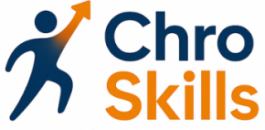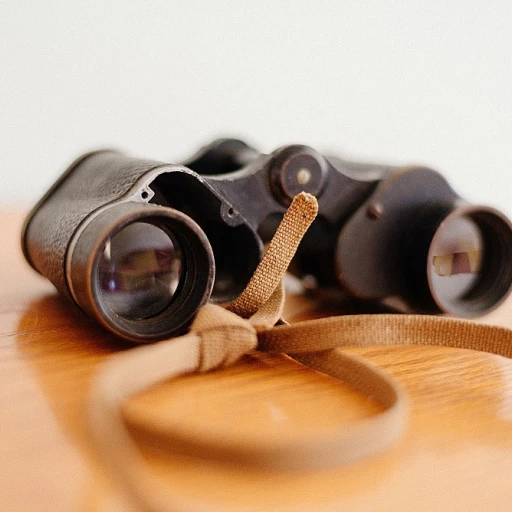
Understanding the Role of a Chief Human Resources Officer
Recognizing the Critical Responsibilities
The role of a Chief Human Resources Officer (CHRO) encompasses a broad range of responsibilities, aimed at effectively managing and leading an organization's human capital. A profound understanding of these responsibilities is vital for anyone aspiring to step into this role, ensuring they can drive strategic initiatives that align human resources with the company’s overarching goals.
Strategic Leadership in HR Management
At the core, a CHRO is tasked with leading the human resources department. This requires not only exhibiting strong leadership skills but also implementing strategic foresight to align HR initiatives with business objectives. The CHRO must develop and set both short-term and long-term goals that facilitate professional growth for employees and contribute to the company’s success. Understanding and mastering project management and performance management are key aspects of this role.
Enhancing Professional Growth
An effective CHRO focuses on employee development, harnessing the power of performance and development goals to enhance the skill set of their team. This involves setting career goals that help employees achieve both professional and personal growth, and managing initiatives to improve communication skills, public speaking, and time management.
Driving Performance and Employee Engagement
It’s imperative for a CHRO to manage performance goals effectively, facilitating both personal and corporate development. By establishing a support system for goal setting and leveraging leadership skills, CHROs can inspire their teams to excel. Employee engagement is another critical element, with the utilization of strategies like email marketing to keep employees involved and motivated.
Key Skills for Effective Human Resources Leadership
Essential Competencies for Excellent HR Leadership
Developing a range of key skills is fundamental for effective human resources leadership. Aspiring CHROs must possess a well-rounded skillset to lead their teams and organizations toward success.- Communication Skills: Clear and effective communication is crucial in any HR role. Being able to convey information and expectations to employees, team members, and executives is critical. This includes both verbal and written communication as well as public speaking abilities.
- Leadership Skills: A CHRO should serve as a role model, guiding others and fostering a collaborative team environment. Effective leadership requires understanding team dynamics, resolving conflicts, and being an inspiring leader who motivates the workforce.
- Performance Management: Proficiency in performance management is essential. This involves setting performance goals, conducting evaluations, and providing feedback that aids employee development. Supporting employees through their career goals and development plans is also a key aspect.
- Time Management: Efficiently managing one’s time and that of the team is essential for meeting short and long term objectives. Balancing multiple responsibilities while maintaining focus on strategic development goals is a significant aspect of this skill.
- Project Management: Ability to oversee complex HR projects, including implementing new systems or policies, coordinating team activities, and managing resources effectively, is a must-have skill.
- Strategic Thinking: Strategic planning is critical for aligning HR initiatives with broader business goals. This involves understanding market trends, anticipating organizational needs, and setting long-term vision and strategies.
Setting Development Goals for Work
Establishing Targeted Development Goals
To excel in a role as influential as a Chief Human Resources Officer, setting clear and effective development goals is crucial. These goals serve as benchmarks for professional growth and improvement, fostering a work environment that prioritizes both individual and team successes. One key aspect is distinguishing between short-term and long-term goals. Short-term goals could focus on enhancing specific skills such as public speaking or project management, applicable within months. This allows for immediate results and boosts morale, providing stepping stones to more comprehensive objectives. Long-term goals, on the other hand, help shape visionary leadership. These could involve establishing robust performance management systems or driving employee development strategies that support career advancement over the years. It’s essential that these goals align with the broader organizational mission to ensure harmony and consistent progression. To create effective professional development goals, consider the following steps:- Assess Current Skills and Gaps: Evaluate your current capabilities in areas such as communication, team leadership, and time management. Identify where improvement is needed to meet the demands of the role.
- Align with Organizational Objectives: Make sure that personal development objectives are in sync with your company's strategic goals. This alignment motivates both personal and organizational growth.
- Incorporate Feedback: Regularly seek input from peers and employees. This feedback loop not only validates your goal-setting process but also enhances communication skills, making leadership more dynamic.
- Prioritize and Organize: Given the multifaceted nature of being a CHRO, it is critical to prioritize goals realistically based on impact and urgency. Employing effective public speaking, time management, and project management are critical professional goals in this regard.
- Regular Review and Adjustment: Development is an iterative process. Regular review of your goals enables you to track progress and make necessary adjustments as circumstances evolve. This adaptability supports long-term career achievements.
Strategies for Implementing Development Goals
Approaches to Enacting Growth Objectives Within Your Team
Once a Chief Human Resources Officer (CHRO) has set the groundwork for development goals, the next challenge is putting those goals into action. Effective implementation is key to driving professional growth and enhancing the overall performance of the team. Below are strategies to consider when putting development goals into practice:
- Break Down Goals into Smaller Steps: Transitioning goals from concept to action is easier when they are divided into manageable tasks. This approach helps in maintaining focus, allowing team members to achieve short-term wins while working towards long-term objectives. Breaking down goals encourages consistent progress and keeps employees motivated.
- Involve Employees in the Goal Setting Process: Engaging employees in setting their own development goals fosters a sense of ownership, alignment related to their career goals, and boosts motivation. Their active involvement ensures the goals are both realistic and meaningful, fueling their commitment to success.
- Offer Support and Resources: Providing necessary resources, such as training or mentorship, is invaluable for goal implementation. Support in developing communication skills, project management, and time management can be pivotal. This ensures team members feel equipped to tackle their goals, thereby improving professional performance.
- Establish Clear Communication Channels: Open, ongoing communication about the progress of development goals is essential. Whether through regular meetings or updates, maintaining a flow of information between HR leadership and employees helps address challenges, access resources, and re-align goals if necessary.
- Integrate Feedback Mechanisms: Implement mechanisms to collect and integrate feedback from employees regularly. This process highlights areas that require improvement and acknowledges what is working well. Feedback serves as a cornerstone for modifying strategies, enhancing employee engagement, and setting more refined goals.
- Monitor and Evaluate Progress: Monitoring progress through established performance metrics is crucial. By reviewing these metrics, leaders can evaluate what aspects of goals work and where adjustments are needed. Regular evaluations align with performance management standards and contribute to continuous professional development.
Implementing development goals is not a one-time effort but a dynamic process that requires adaptation over time. These strategies help ensure that goals contribute meaningfully to both immediate and long-term objectives, enhancing leadership skills and team performance.
Overcoming Challenges in Human Resources Leadership
Tackling Challenges in HR Leadership
Navigating the complex landscape of human resources leadership involves facing a myriad of challenges that can impede the progress in achieving development goals. To effectively overcome these obstacles, aspiring Chief Human Resources Officers must harness their professional skills and strategic acumen.- Adaptive Communication Skills: Effective communication is pivotal in addressing issues that arise, whether it involves resolving conflicts or motivating a team. By honing public speaking and adaptive communication skills, HR leaders can foster a positive workplace culture, essential for supporting goal achievement.
- Efficient Performance Management: Implementing a robust performance management system helps in setting clear performance goals for employees. Monitoring individual and team performance regularly leads to better alignment with long-term and short-term organizational objectives.
- Strategic Time and Project Management: Balancing multiple responsibilities requires proficient time and project management skills. Effective prioritization ensures the focus remains on critical tasks that will drive professional development and organization growth.
- Fostering Leadership and Career Growth: Leadership skills are not just about guiding others; they are essential for personal professional growth. By investing in leadership development programs, HR leaders can nurture their ability to inspire and drive change within their teams.
- Continuous Professional Development: The dynamic nature of the HR landscape requires continuous learning and development. Seeking workshops, seminars, and further education helps in staying updated with the latest trends and best practices, thereby enhancing professional goals.













